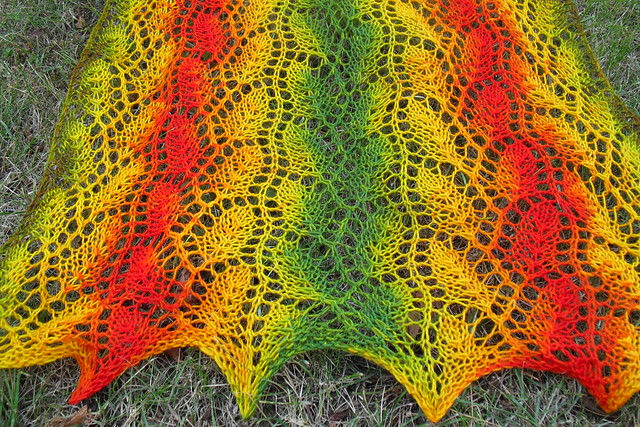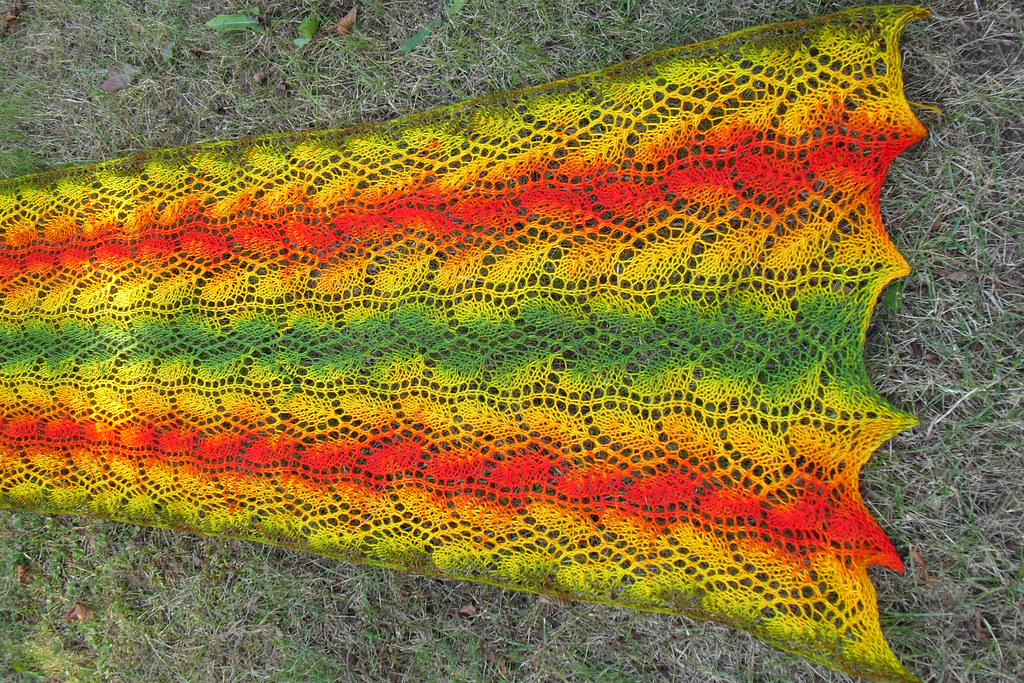Would you like another pooling pattern? I bound this off last night. It was so much fun to work on. You may recognize the leaves from the Flower Power Stole — the were a little lost in that one, and I loved them so much that I thought they deserved their own full pattern. This one's going to Teri, who donated the gorgeous bags to our Ride2Survive cancer fundraiser — thank you so much, Teri!
The yarn is Wollmeise 100% merino, and the colourway is called Bob. The colour is described as:
Green, yellow and orange like nasturtium (literally "nose-twister" or "nose-tweaker"), as a common name, refers to a genus of flowering plants.
Wikipedia's comment: The name Nasturtium comes from the Latin nasus tortus, meaning "twisted nose", in reference to the effect on the nasal passages of eating the plants.
As an aside: I did think about calling this the Twisted Nose pooling stole, but then I realized that people probably wouldn't want to knit something with that name.
Note: If you're new to the pooling technique, please read the first pattern in this series to get a good idea of how to figure out where your yarn will pool. Also, if you need any additional support, there's now a Pooled Knits discussion group on Ravelry (registration required), which has quite a few people who are experimenting with different pooling projects, and are happy to help out with beginners to this technique.
Watercress Leaves pooling stole
Using an "e" or backwards loop cast-on, cast on 83 stitches onto a US7 needle. Please see my previous posts about figuring out your own "magic number" to cast on, depending on your tension on the needles you've chosen.
Knit garter stitch for 6 rows.
Start working with the chart below. The stitches in orange are your garter edging. My edging had 2 edge stitches on either side (4 total), but your edging will be different depending on your stitch tension, so please add or subtract stitches as you need to.
(Click on the chart to get it in a larger, more printable size.)






































